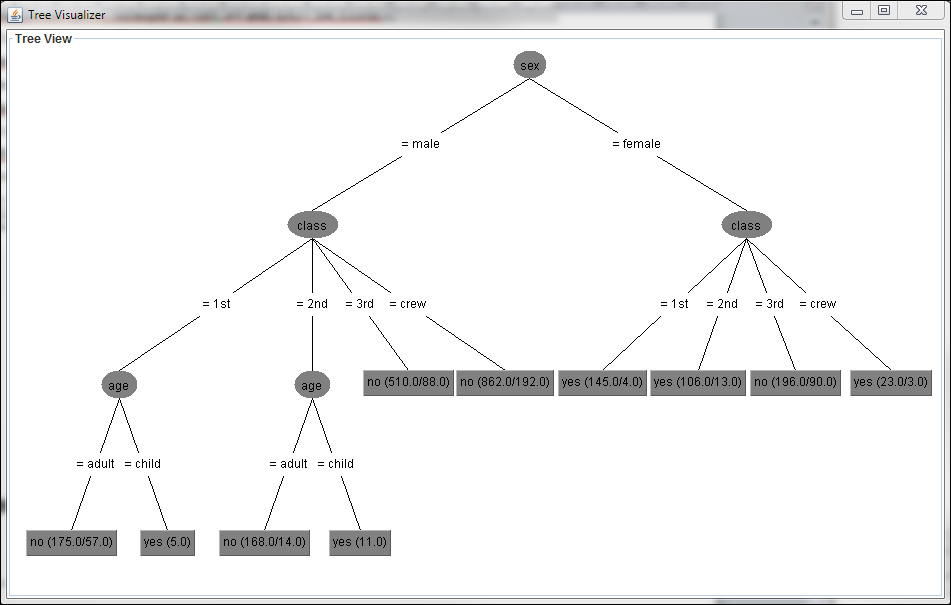Decision trees can be extremely helpful to understand the underlying patterns in the dataset when visualized. This recipe demonstrates how to visualize a J48 decision tree. We will load our Titanic dataset, build a tree, and visualize it in a frame.
To visualize a tree, run this snippet:
import java.awt.BorderLayout;
import java.io.BufferedReader;
import java.io.FileReader;
import weka.classifiers.trees.J48;
import weka.core.Instances;
import weka.gui.treevisualizer.PlaceNode2;
import weka.gui.treevisualizer.TreeVisualizer;
...
Instances data = new Instances(new BufferedReader(new FileReader(dataset)));
data.setClassIndex(data.numAttributes() - 1);
J48 classifier = new J48();
classifier.buildClassifier(data);
TreeVisualizer tv = new TreeVisualizer(null, classifier.graph(), new PlaceNode2());
JFrame frame = new javax.swing.JFrame("Tree Visualizer");
frame.setSize(800, 500);
frame.setDefaultCloseOperation(JFrame.EXIT_ON_CLOSE);
frame.getContentPane().add(tv);
frame.setVisible(true);
tv.fitToScreen();Import the J48 classifier and the weka.core.Instances class:
import weka.classifiers.trees.J48; import weka.core.Instances;
From weka.gui.treevisualizer first import the PlaceNode2 class that places the nodes of a tree so that they fall evenly below their parent without overlapping.
import weka.gui.treevisualizer.PlaceNode2;
Next, from the same package, import TreeVisualizer, which displays the node structure in Swing:
import weka.gui.treevisualizer.TreeVisualizer;
Then, load a dataset:
Instances data = new Instances(new BufferedReader(new FileReader(dataset))); data.setClassIndex(data.numAttributes() - 1);
Build a classifier:
J48 classifier = new J48(); classifier.buildClassifier(data);
Call the TreeVisualizer(TreeDisplayListener tdl, String dot, NodePlace p) constructor. It expects a listener (null in our case), a tree provided in dot format (generated by classifier.graph()), and an algorithm to place the nodes (PlaceNode2):
TreeVisualizer tv = new TreeVisualizer(null, classifier.graph(), new PlaceNode2());
Create a frame:
JFrame frame = new javax.swing.JFrame("Tree Visualizer");
frame.setSize(800, 500);
frame.setDefaultCloseOperation(JFrame.EXIT_ON_CLOSE);Add tree visualizer to the content pane:
frame.getContentPane().add(tv);
Make the frame visible:
frame.setVisible(true);
And call the fitToScreen() method to resize the tree:
tv.fitToScreen();
The result is a frame:

